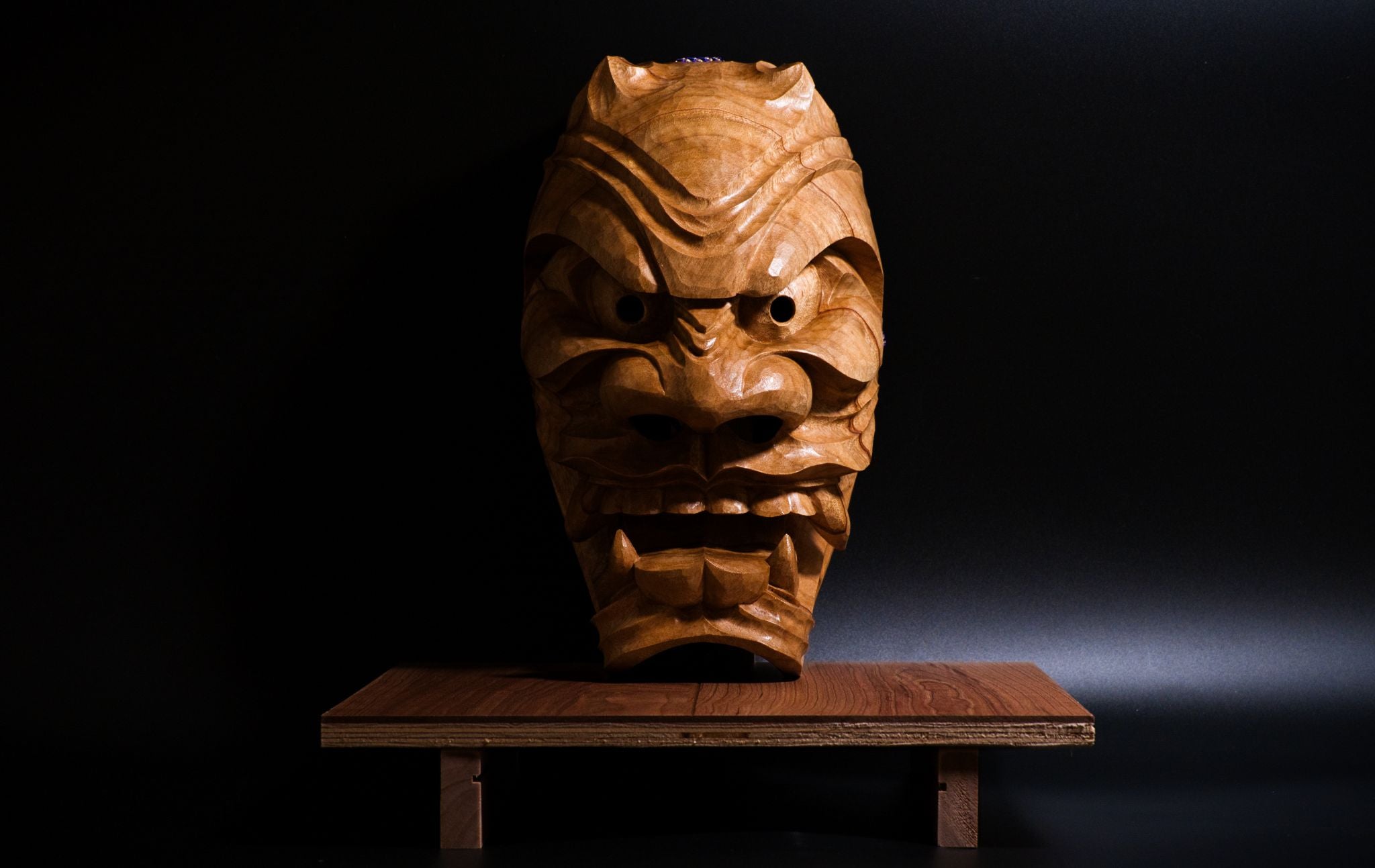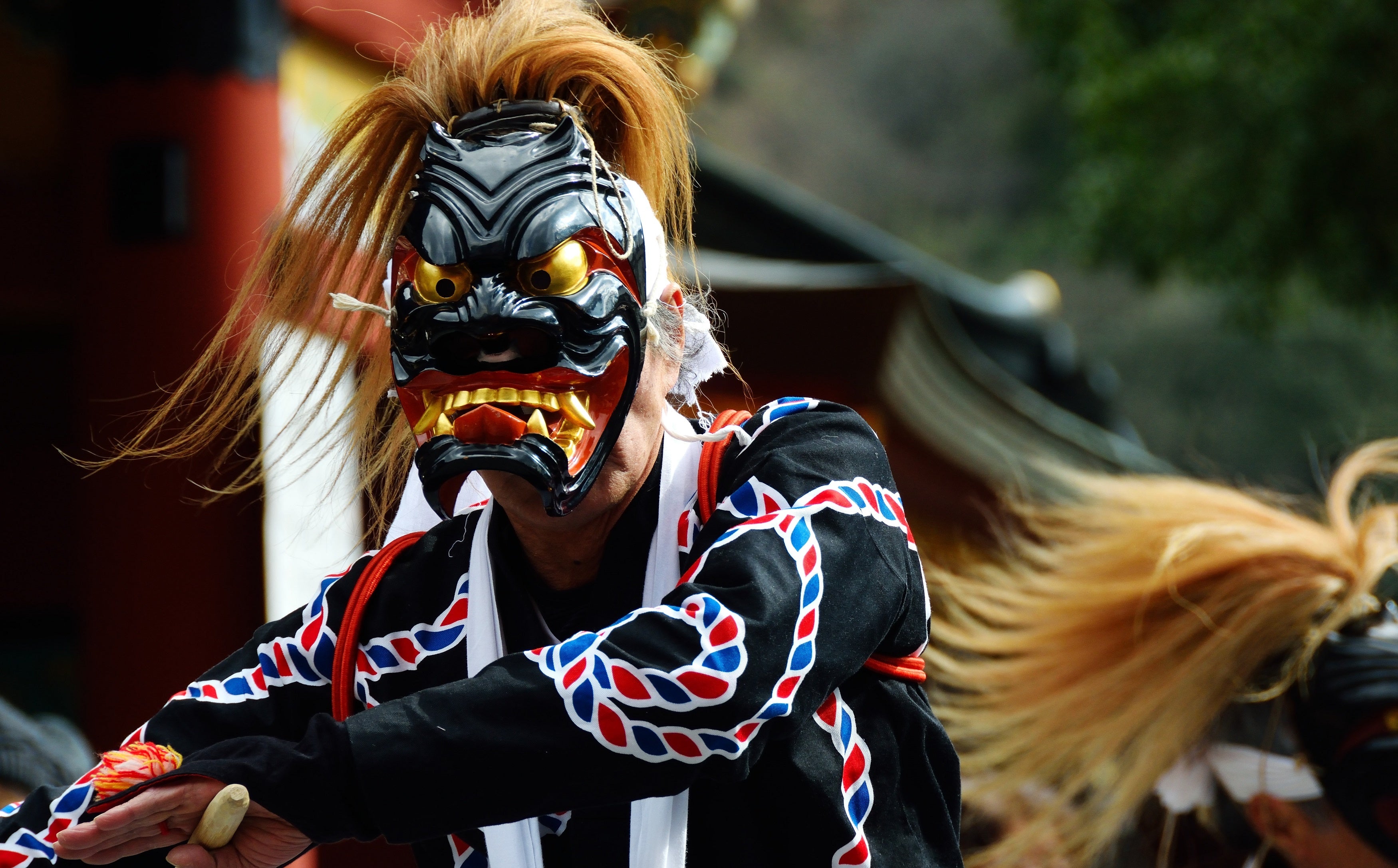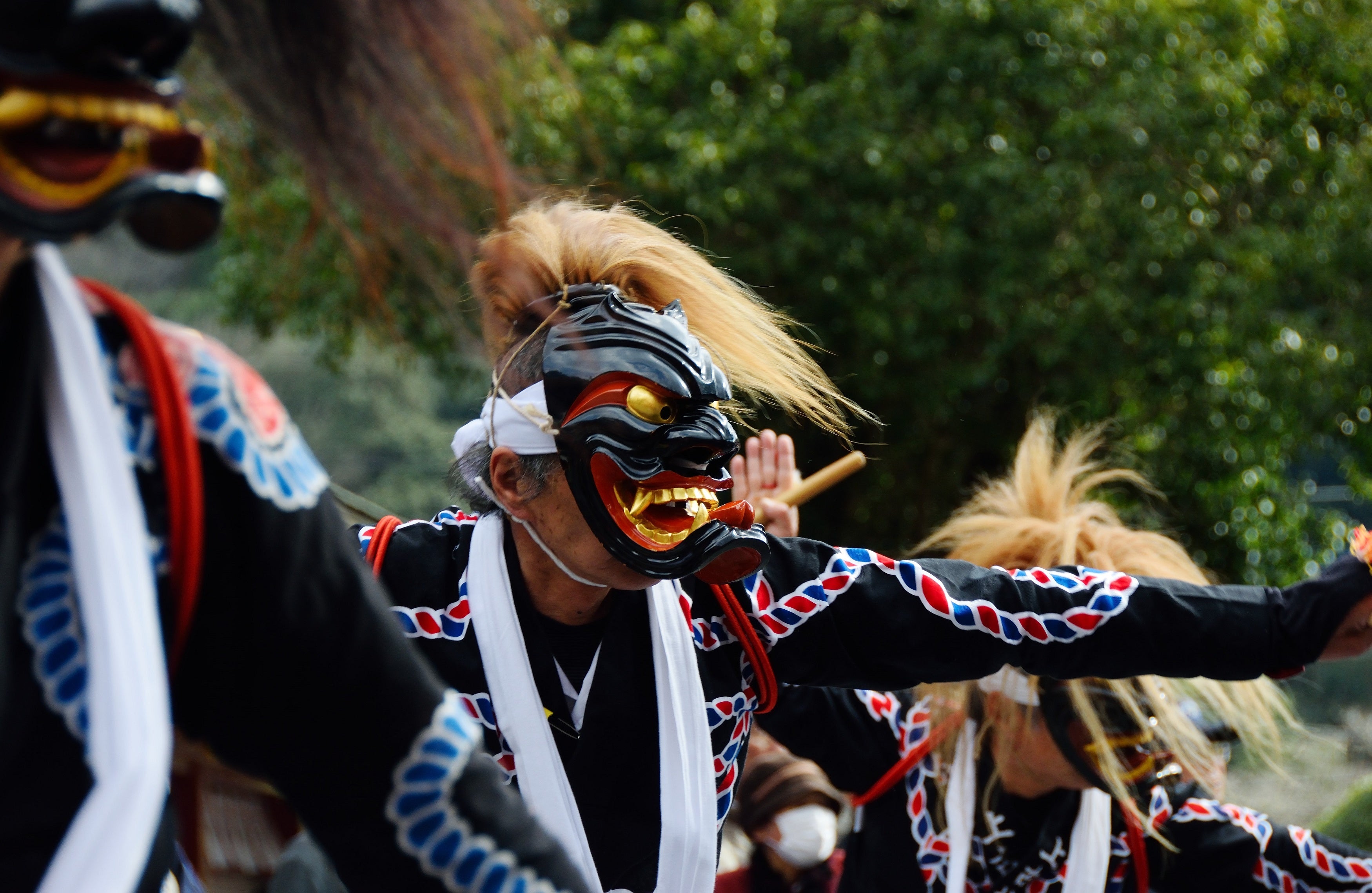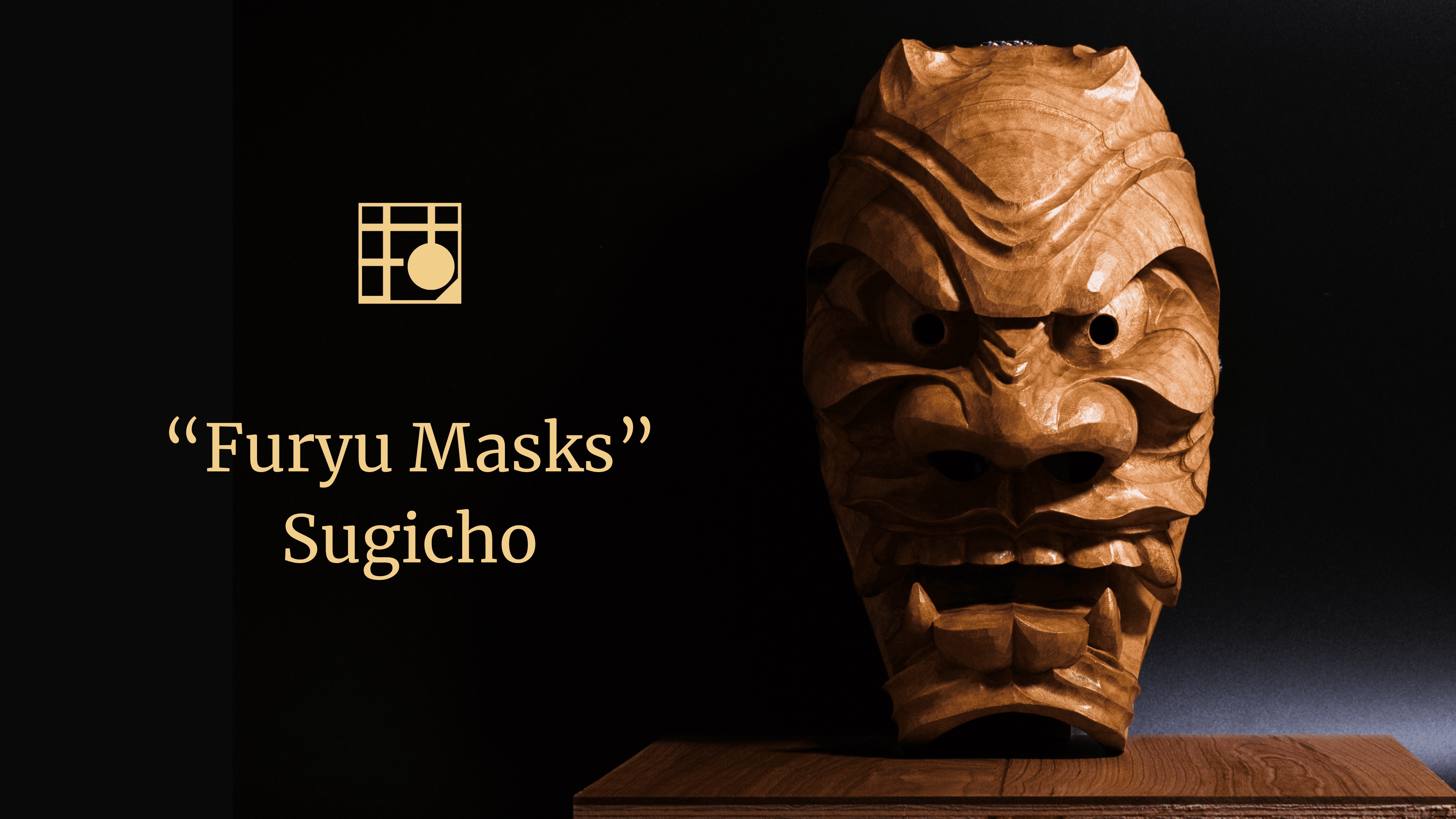
Sugicho
The Sacred Oni —
Spirit in Wood, Carved in Ritual, Passed Through Generations.



For over 400 years, the ritual art of menburyu—a sacred dance performed with fierce Oni masks—has echoed through the mountains of Saga.
These masks, known as Furumen, are carved from sacred woods like camphor and paulownia, paired in the dual spirits of A and Un—the beginning and the end.Legend tells of warriors who, clad in wild crests of red hair, charged into enemy lines to the thunder of taiko drums and temple bells.
In victory, they danced in that very form—armor, masks, and all—giving rise to a tradition that would outlive the battle itself.These masks were never made to frighten, but to protect.
Each face is hand-carved with reverence, the woodgrain left visible as if the spirit itself were breathing beneath.
Their purpose was to ward off evil, to bring fortune, to honor gods—and today, they remain symbols of sacred protection in the home.
This legacy has been distilled.
While only three artisans in all of Japan still possess the skill to carve them, their rarity only heightens their reverence.
Among them is Keiun Komori, fifth-generation carver of Sugichō, whose hands carry both the blade and the prayer.These are not souvenirs.
They are guardians—fragments of Japan’s sacred memory, reborn.

The Sculptor – Keiun Komori V
Fifth-Generation Sculptor of Ritual Forms
Keiun Komori is not simply a craftsman—he is a sculptor of ritual forms.
The fifth bearer of his name, Komori works under the banner of Sugichō,
a lineage rooted in sacred architecture.
His ancestors were miyadaiku—temple builders—who shaped not only timber,
but the very spaces where gods reside.
From this sacred foundation, the Komori family began to carve Furumen masks:
not objects of fear, but of reverence and protection.
Today, the tradition lives on in only three artisans across all of Japan.
One of them is Keiun Komori V, and another is his father, Keiun Komori IV.
Their blades hold more than precision—they hold memory.
Every mask carved by the fifth-generation Komori is a singular expression.
As the wood breathes, the face transforms.
What begins as a sculpted object becomes presence itself—a vessel that deepens with time.
Origins
For over 400 years, the sacred dance of menburyu—with fierce Oni masks—has echoed through Saga’s mountains.
Furumen masks, carved from sacred woods like camphor and paulownia, embody the spirits of A and Un—the beginning and the end.
Legend tells of warriors who, crowned in red crests, charged into battle and later danced in victory, giving birth to a tradition that endures.
Purpose
These masks were carved not to frighten, but to protect.
Each face is shaped with reverence, the living woodgrain left visible. Today, they remain sacred guardians, warding off evil and blessing homes with fortune.
Legacy
Only three artisans in all of Japan still carry this sacred skill. Among them is Keiun Komori, fifth-generation carver of Sugichō—each mask he creates, a rebirth of memory and spirit.
The Sculptor – Keiun Komori V
Fifth-Generation Sculptor of
Ritual Forms
Keiun Komori is the fifth heir of Sugichō, a lineage of sacred carvers tracing back over 200 years. Descended from temple builders, Komori crafts Furumen masks not from fear, but from reverence.Each mask, hand-carved from living wood, becomes a vessel of spirit that deepens with time.
Movie
Movie

Movie

![技ft.[Gift]](http://wakurise.com/cdn/shop/files/ft.png?v=1746697500&width=600)
